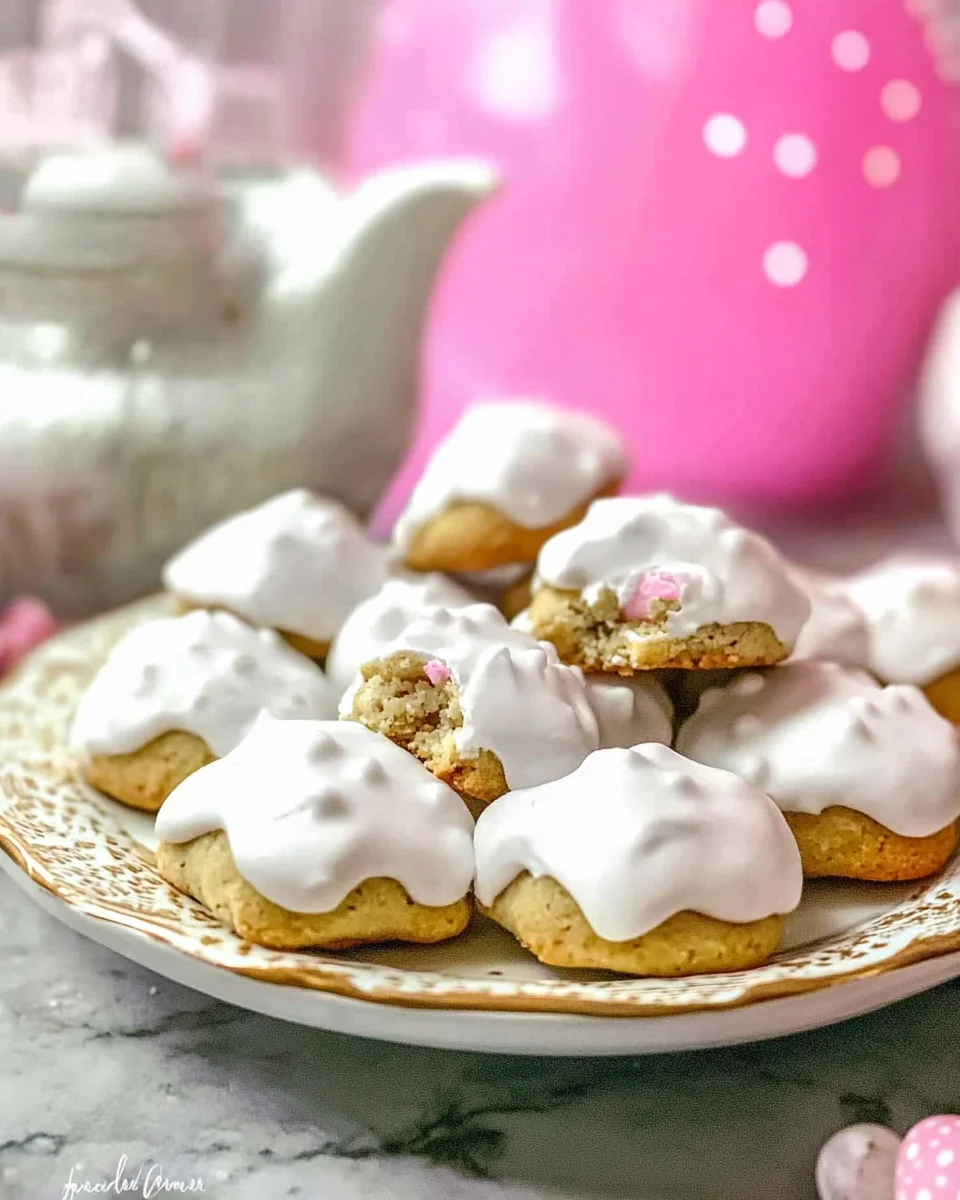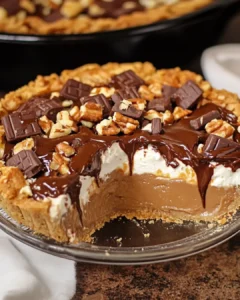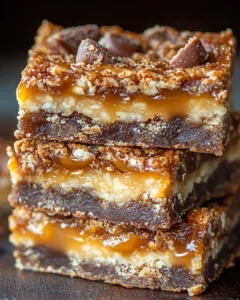A Family Tradition with a Deeper Meaning
Growing up, Easter was always more than just pastel-colored eggs and chocolate bunnies. In my family, it was a time of reflection, gratitude, and joy. But as a child, I didn’t fully grasp the significance of the holiday beyond the excitement of an Easter egg hunt. That changed the year my grandmother introduced us to a special tradition—making Resurrection Meringue Cookies the night before Easter Sunday.
I remember standing on a stool in her warm kitchen, watching her gather the ingredients, her voice gentle yet full of purpose. “We aren’t just baking,” she told me with a knowing smile. “We are telling a story.”
That night, as we followed each step, she connected the ingredients to different moments of Jesus’ journey—His suffering, His love, and ultimately, His resurrection. She let me taste the vinegar and salt, explaining how bitterness and sorrow were part of the story. Then we added sugar, reminding us that through the darkness, love remained. The cookies sat in the oven overnight, sealed like a tomb, and in the morning, when we broke them open, they were hollow inside—just like the empty tomb on Easter Sunday.
That experience left an imprint on my heart. Now, every year, I share this tradition with my own children. It’s more than just a recipe; it’s a hands-on lesson in faith, patience, and the joy of Easter morning.
The Story Behind Resurrection Cookies
Resurrection Meringue Cookies, sometimes called Easter Story Cookies, are a simple yet profound way to teach children about the true meaning of Easter. This tradition, which has been passed down through generations, turns a baking session into a reflective experience, blending storytelling with hands-on learning.
The cookies symbolize Jesus’ journey—from His suffering on Good Friday to the miracle of His resurrection. Each ingredient represents a part of the story, making it a powerful teaching tool for families. Because they are left in the oven overnight, the anticipation builds, just as it did for Jesus’ followers who mourned His death before discovering the empty tomb.
On Easter morning, when the cookies are broken open, the hollow center serves as a simple yet powerful reminder: He has risen.
Why These Cookies Are So Special
1. A Meaningful Easter Tradition
Many families struggle to find ways to make Easter feel as significant as Christmas. This recipe creates a hands-on way to focus on the resurrection, making it more than just an egg hunt and candy-filled baskets.
2. An Interactive Lesson for Kids
Children are naturally curious, and this recipe allows them to experience the Easter story through their senses—tasting, touching, and seeing how each step connects to scripture.
3. Simple Ingredients, Lasting Impact
Unlike elaborate holiday dishes, these cookies require just a few pantry staples. The simplicity allows families to focus on the meaning behind them rather than the complexity of baking.
4. No-Bake Convenience
Because the cookies “bake” in a warm, turned-off oven overnight, there’s no need to monitor them. This makes it an easy tradition for even the busiest families.
Ingredients:
- 1 cup whole pecans
- 1 teaspoon vinegar
- 3 egg whites
- Pinch of salt
- 1 cup sugar
Special Items Needed:
- Bible (for accompanying verses)
- Zip-top bag
- Wooden spoon
- Tape
Steps to Sweet Salvation
1. Crush the Pecans
Place pecans in a zip-top bag and crush them using a wooden spoon. This symbolizes how Jesus was beaten by the soldiers. (John 19:1-3)
2. Add the Vinegar
Let each child smell the vinegar before adding it to a mixing bowl. This represents the vinegar given to Jesus on the cross when He was thirsty. (John 19:28-30)
3. Mix in the Egg Whites
Add the egg whites to the bowl, symbolizing life—Jesus gave His life so we could have eternal life. (John 10:10-11)
4. A Pinch of Salt
Sprinkle a little salt into each child’s hand and let them taste it. This represents the salty tears of Jesus’ followers and the bitterness of sin. (Luke 23:27)
5. Sweeten the Story
Add sugar to the bowl, representing the sweetness of God’s love and Jesus’ sacrifice. (Psalm 34:8, John 3:16)
6. Whip to Perfection
Beat the mixture on high speed for 12-15 minutes until stiff peaks form. The white color represents purity in God’s eyes. (Isaiah 1:18, John 3:1-3)
7. Shape the Tombs
Gently fold in the crushed pecans and drop spoonfuls onto a parchment-lined baking sheet. Each mound represents the rocky tomb where Jesus was laid. (Matthew 27:57-60)
8. Seal the Tomb
Place the cookie sheet in a preheated 300°F oven. Turn the oven off and tape the door shut, symbolizing how Jesus’ tomb was sealed. (Matthew 27:65-66)
9. Wait in Faith
Go to bed and let the cookies sit overnight. Just as Jesus’ followers mourned His death, we wait in anticipation. (John 16:20, 22)
10. The Miracle Morning
On Easter morning, break open a cookie—its hollow center symbolizes the empty tomb! Jesus has risen! (John 11:25-26)
Divine Nutritional Blessings (Per Cookie)
- Calories: ~40
- Carbohydrates: ~9g
- Protein: ~0.5g
- Fat: ~1g
- Sugar: ~8g
These cookies are more than just a treat—they are a hands-on lesson in faith, hope, and love. Perfect for Easter morning traditions!
Frequently Asked Questions
Do these cookies actually bake if the oven is turned off?
Yes, but in a different way than traditional baked goods. Meringue cookies are unique because they dry out rather than bake at high temperatures. By preheating the oven and then turning it off, the residual heat slowly removes moisture from the cookies overnight, creating a crisp, airy texture.
Can I use a different type of nut?
Absolutely. While pecans are commonly used, walnuts or almonds work just as well. You can also leave out the nuts if there are allergies in your family—the cookies will still be delicious and meaningful.
How do I store Resurrection Cookies?
These cookies store well in an airtight container at room temperature for up to a week. They should remain crisp, but if they become soft, you can briefly place them in a warm oven to refresh them.
Can I make these cookies without a religious lesson?
Of course. While the traditional purpose is to teach the Easter story, these cookies are still a delightful treat on their own. They are light, sweet, and melt in your mouth—perfect for any occasion.
What if my cookies don’t turn out hollow?
If the cookies aren’t completely hollow inside, it could be due to humidity or under-beating the egg whites. Be sure to whip them until stiff peaks form, and avoid making these on very humid days, as moisture in the air can affect the meringue’s texture.
Can I use a sugar substitute?
Yes, but keep in mind that sugar plays an important role in stabilizing the meringue. If using a sugar alternative, choose one that is specifically designed for baking. The texture may vary slightly, but the overall concept remains the same.
Do I need to tape the oven shut?
While it’s not required for baking, taping the oven shut adds an extra layer of symbolism, helping children understand how Jesus’ tomb was sealed. It also prevents curious little hands from opening the oven too soon.
Can I flavor the cookies?
Yes! A drop of vanilla or almond extract can add a hint of extra flavor. Some families also enjoy adding a bit of food coloring to make them festive.
Bringing the Tradition to Your Home
Making Resurrection Cookies is more than just a baking activity—it’s an opportunity to pause, reflect, and connect as a family. Whether you’re introducing the tradition for the first time or continuing a practice that has been passed down, these cookies serve as a reminder of the hope and joy of Easter morning.
As you gather around the kitchen, let the conversation flow. Encourage children to ask questions, share their thoughts, and reflect on what Easter means to them. In a world that often moves too fast, this tradition creates a space for meaningful connection.
And when Easter morning arrives, as you break open the cookies and find them hollow inside, take a moment to celebrate—not just the sweetness of the treat, but the message behind it. The tomb was empty. The promise was fulfilled.
Easter is more than a day on the calendar; it is a story of love, sacrifice, and redemption. And sometimes, the simplest traditions—like a batch of meringue cookies—carry the most powerful lessons.
Print
The Sweetest Lesson: Easter Resurrection Meringue Cookies
- Total Time: Overnight
- Yield: 24 cookies
Description
These Heavenly Hollow Meringue Cookies are a sweet and meaningful Easter tradition. Each step of the process represents part of Jesus’ journey to resurrection, making this recipe a hands-on lesson in faith. With their crispy exterior and hollow center, these cookies symbolize the empty tomb on Easter morning, bringing both delicious flavor and deep significance to your celebration.
Ingredients
- 1 cup whole pecans
- 1 teaspoon vinegar
- 3 egg whites
- Pinch of salt
- 1 cup sugar
Special Items Needed:
- Zip-top bag
- Wooden spoon
- Tape
Instructions
- Crush the Pecans
- Place pecans in a zip-top bag and crush them using a wooden spoon.
- Add the Vinegar
- Let each child smell the vinegar before adding it to a mixing bowl.
- Mix in the Egg Whites
- Add the egg whites to the bowl, representing life.
- A Pinch of Salt
- Sprinkle a little salt into each child’s hand and let them taste it.
- Sweeten the Story
- Add sugar to the bowl, representing the sweetness of God’s love.
- Whip to Perfection
- Beat the mixture on high speed for 12-15 minutes until stiff peaks form.
- Shape the Tombs
- Gently fold in the crushed pecans and drop spoonfuls onto a parchment-lined baking sheet.
- Seal the Tomb
- Place the cookie sheet in a preheated 300°F oven. Turn the oven off and tape the door shut.
- Wait in Faith
- Let the cookies sit overnight, just as Jesus’ followers mourned His death.
- The Miracle Morning
- On Easter morning, break open a cookie—its hollow center symbolizes the empty tomb!
Notes
- Use a stand mixer for best results when whipping the meringue.
- For extra sweetness, dust the finished cookies with powdered sugar.
- Store leftovers in an airtight container for up to one week.
- Perfect for Sunday School lessons and Easter morning traditions!
- Prep Time: 20 minutes
- Cook Time: 0 minutes (overnight resting required)
- Category: Dessert
- Method: No-Bake
- Cuisine: Traditional / Easter




